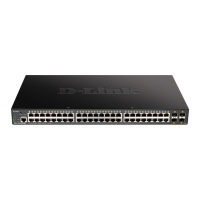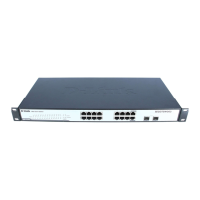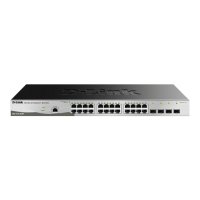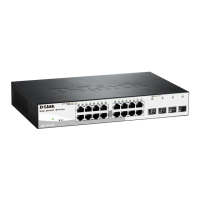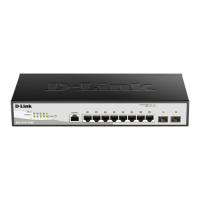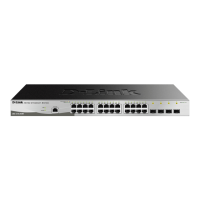DGS-1250 Series Gigabit Ethernet Smart Managed Switch Web UI Reference Guide
95
MSTP Port Information
This window is used to display and configure the MSTP port information settings.
To view the following window, click L2 Features > STP > MSTP Port Information, as shown below:
Figure 5-39 MSTP Port Information Window
The fields that can be configured are described below:
Parameter Description
Port
Select the port number that will be cleared here.
Cost After clicking the Edit button, enter the cost value here. This value must be
between 1 and 200000000.
Priority After clicking the Edit button, select the priority value here. Options to choose
from are 0 to 240. By default, this option is 0. A lower value has higher priority.
Click the Clear Detected Protocol button to clear the detected protocol settings for the port selected.
Click the Find button to locate a specific entry based on the information entered.
Click the Edit button to re-configure the specific entry.
Enter a page number and click the Go button to navigate to a specific page when multiple pages exist.
Loopback Detection
The Loopback Detection (LBD) function is used to detect the loop created by a specific port. This feature is used to
temporarily shut down a port on the Switch when a CTP (Configuration Testing Protocol) packet has been looped
back to the Switch. When the Switch detects CTP packets received from a port or a VLAN, this signifies a loop on the
network. The Switch will automatically block the port or the VLAN and send an alert to the administrator. The
Loopback Detection port will restart (change to normal state) when the Loopback Detection Recover Time times out.
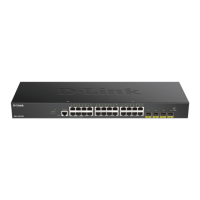
